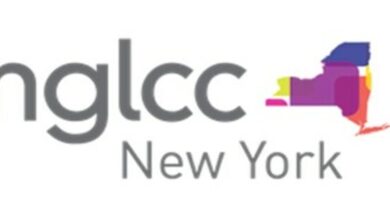5 Ways LGBTQ Financial Planning Is Different

On Friday, I asked a client for some additional documents so I could prepare for an upcoming meeting. He said he’d get to it soon, but not before Monday. He was slammed getting ready for a big party. He closed the email “Happy Pride!”
I responded “Happy Pride” and reminded him “pictures or it didn’t happen.” He sent me a colorful photo of a rainbow-clad, selfie wall. I felt so lucky and grateful in that moment. I get paid to plan for a community that I love, whose members can be their full selves with me.
Because I focus on financial planning for the LGBTQ community, people often ask, “What makes LGBTQ planning different?’ Or to put another way, “can someone really specialize in LGBTQ planning?” I’ve already written about the distinct financial planning challenges that still exist after marriage equality came about, but I recently got asked what the planning actually looks like: “What do you do with your clients in the face of these challenges?
In honor of Pride month, let’s pull back the curtain on some of the unique characteristics of LGBTQ financial planning and what that planning actually looks like.
- We still have to carefully navigate society
This may seem obvious. Of course, being LGBTQ in the world makes us unique and different. And in many ways that’s good. We’re often forced to embrace our individuality, so we let our let shine, especially during Pride month. As one client put it, “I really turn up in the month of June.”
In other ways, it’s still pretty hard. Let’s take working as an LGBTQ person, for example:
So yes, in 2019, the age of marriage equality, Mayor Pete, and Queer Eye, LGBTQ workers still feel that being out could hurt their careers . That leads to job insecurity and lower mobility. It may cause people to stay in careers they hate or with companies that don’t accept them.
For instance, one of my clients works doesn’t feel comfortable or fulfilled at the large tech company where he works. We’ve had in-depth conversations around his goals and values. We’ve discussed whether getting paid $300,000+ per year makes up for not being able to be who you are or not being comfortable in your work environment. We ended up creating a five-year exit strategy around the vesting of his equity compensation, so he can pursue his dream of quieter life working for himself.
Because I’m gay myself, I understand and empathize with my clients’ struggles as LGBTQ people. I can help them confront and navigate the challenges that come their way. My experience also allows me to ask the right questions that help them recognize the choices and opportunities available to them.
- We buck the trend
Marriage equality is the law of the law, but it’s not for everyone. I work with multiple couples that have chosen not to get married. Some just like the way things are, and others think getting married conforms to societal norms that they don’t want to be a part of. For these couples, I make sure to highlight the 1,100+ benefits that come with being married. However, I also encourage them to create their own path. As long as they’re being thoughtful and intentional about their decisions, I say “let’s do that!”
From a technical statement point, it also means I need to understand the pitfalls of not being married. There are some real issues around sharing bank accounts and splitting expenses, especially when one partner earns a lot more than the other. Splitting expenses and giving money to one another can create gift tax liabilities for unmarried partners; it also makes filing income tax returns more complicated. Estate and insurance planning are also complex—and very necessary—for couples who aren’t wed. We need to make sure they’re able to take care of one another if something unexpected happens. Being married does create some safeguards.
And speaking of bucking the trend, I have a few gender non-conforming clients as well. This produces its own set of challenges when it comes to applying for insurance (most have had to apply with their original birth gender) and even entering them into our tech solutions, which often only offer binary options. One tech provider was forcing a client to pick a gender, when they didn’t want to. So I had to learn how to navigate those sensitive conversations, develop a work around and advocate for more inclusive technology.
- We pay a high price to live amongst our peers
Navigating the world as an LGBTQ person can be difficult. It’s easier if you live where there are more people like you. As a result, LGBTQ people tend to live in urban, high-cost areas. In addition, LGBTQ people are more likely than straight ones to consider themselves spenders. It’s expensive to live the way many of us want to, and that requires some planning, too.
As a result, I spend time with my clients going over their cash flow. We take an inventory of what’s coming in and what’s going out. Additionally, we create spending plans that allow them to establish security and reserves. We plan for what they want and need now, as well as what they will want and need in the future.
We have to deal with navigating jumbo mortgage loans, spending with intention and facing the anxiety of all of those articles about not having X saved by time your 30, 40 or 50. Should you really be comparing yourself to other people who don’t have pay 30-40% of their income on housing? Instead of worrying about society around them, we focus on building good habits that contribute to the life that they want to live.
- We have to plan to have a family
Several of my LGBTQ clients have children, and I’ve yet to hear any of them say it was unexpected. Usually, they’ve planned for months or years in advance. I’ve become intimately familiar with the different methods of creating a family — adoption, fostering and surrogacy. I’ve also learned a lot about second parent adoption and situations where both spouses can appear on the birth certificate.
Having children is always costly, but often more so for LGBTQ couples. At the low end, fostering costs next to nothing and, at the high, surrogacy can run $100,000 to $200,000. I find digging into the nuances of the adoption credits and the deductibility of certain medical expenses especially fun.
The LGBTQ community often has to choose their family structure, when their biological family may not be the most welcoming. When it comes to planning, I want to make sure that family is protected as well as possible.
- Our mindset matters
Lastly, I spend time digging into my clients mindsets, whether it’s analyzing money scripts or getting information on their financial perspective or ability to build wealth. Granted, I think this is important for all clients, but especially for my LGBTQ clients who tend to have more emotional baggage around family and money.
I also like to celebrate those millionaire clients who have against all odds accumulated wealth—that goes double for my LGBTQ clients of color.
In the end, I want my clients to embrace their uniqueness, become confident in what they want to accomplish and be proud of our rich culture and history. We are unique. We need to plan differently. And the more we embrace those differences, the better off we will be. Happy Pride!





